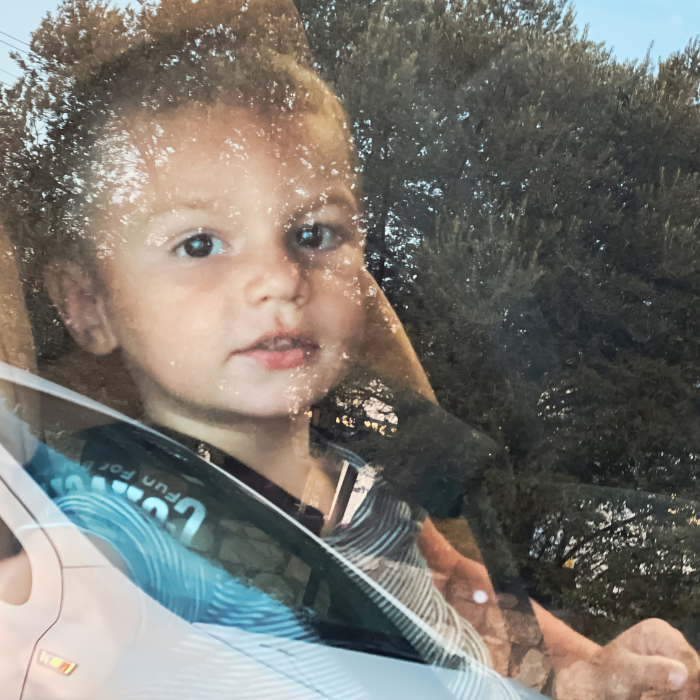
Help your children understand where their food comes from by growing it at home …. using everyday items from your pantry. What could be easier?
Have you heard the one about the child who thought they could grow pasta? How about the tot who asked her mum why cucumbers have plastic skin? I know, I put them both down as urban rumours, too, but still, it does start you wondering about just where kids think their food comes from.
Food is fascinating, and kids deserve to know about what they’re eating, even if it’s while they’re whizzing round the supermarket in a trolley. Much better, though, and a whole lot more fun, is to let them grow stuff themselves. You don’t need a garden to do it, or even a packet of seeds. In fact, all you need to help start your child on a whole new botanical world of discovery, is a wet paper towel, a scoop of garden soil or potting mix – and your pantry.
So much of what we keep in our cupboards is ‘living food’ – seeds that, with a little moisture and warmth, will burst into growing, living plants. Even more exciting is that they so often come from exotic, mysterious parts of the world. So grab the children’s atlas, provide your little one with a stable chair to reach the shelves, and away you go!
Dates are fun to grow because you get to nibble off the flesh before soaking the seeds in water and popping them into yoghurt pottles of moist soil (don’t forget to make a drainage hole in the bottom of each container). As you nibble and sow, remember to enthuse with lots of chat about hot, sandy deserts, oasis, and camels. Talk with your child about palm trees and just how dates actually grow. Find the Middle-East in the atlas. Look on Google Image Search for photos of countries such as Iran and Dubai.
While you’re in an exotic frame of mind, reach for the spice jars. Provided they haven’t been sitting on the shelves for too long, pepper corns, cardamom, caraway, cumin, mustard, poppy, dill, coriander and star anise seeds are all very likely to burst into life given the right conditions. To get them germinating, wet a double layer of paper kitchen towels, lay them on a saucer, and let your child sprinkle the seeds on top. Cover with another wet paper towel and bung the whole lot into a plastic bag, sealing the top with a clothes peg or rubber band. Leave the seeds on a sunny window ledge (or, in winter, in a warm place such as the hot-water cupboard or the top of the fridge) and check every two or three days for signs of germination. (Arming your child with a magnifying glass makes this activity even more fun.) When little shoots appear, use tweezers to gently lift the sprouted seeds into containers of damp potting mix. Cover lightly with soil, water as required, and look forward to the first green leaves appearing. Your seedlings my not ever set their own seeds but they will make beautiful and interesting indoor pot plants.
Very young children will have the greatest success when growing larger seeds from the pantry because they are easy to handle. Peanuts (unroasted and taken from their pods), beans, popcorn, and lentils are great starters.** Soak beans, lentils, and corn for a few hours before giving them the wet paper towel treatment, wait for the first shoots to appear, then pot them up in soil or potting mix.
** Beans and lentils arriving from outside New Zealand are usually heat-treated, which means they won’t sprout. Make sure you are using New Zealand-grown beans and lentils by sourcing these foods from a supplier that knows their origins (organic food stores are best for this).
the window ledge jungle
Without going further than your own pantry, you and your child can grow a jungle! Go first for height with seeds that will produce vines. Beans will happily climb up a bamboo stake poked into a pot of soil, and continue growing along a string secured on hooks around the window frame. They’ll produce pretty flowers and may even set fruit with the help of a visiting fly to do the pollinating. Kumara, suspended in a glass of water by toothpicks stuck into each side of the tuber, will quickly grow roots and leaves. Train some of the resulting vine around the window on a string while allowing other sections to cascade down over the pot.
experimenting is fun
As you take your child exploring in the pantry, ask them to tell you just what they think will grow. If they really do think pasta (or rice bubbles, sago, tapioca, or polenta) are starters, give them the opportunity to test out these ‘non-seeds’ by soaking and sowing them. If the foodstuffs disintegrate after a soaking, or refuse to germinate, talk about what’s going on and why. It’s important that children aren’t left feeling silly after sowing non-seeds such as pasta elbows, so keep wisecracks and sniggers from older siblings well out of range of little ears. Follow up on food that won’t grow by helping your child understand the difference between ‘seeds’ and ‘processed food’.
tips for pantry gardening
1 Encourage children to water seeds each day by filling a well-rinsed recycled spray bottle with water (and a little plant food if you have some) and letting them spray to their heart’s content.
2 Help children to decorate pots in ways that reflect the seeds growing in them – palm trees on a pot containing a date seed, for instance.
3 Fresh is best. When it comes to seed-sowing from the pantry, the fresher the seed, the better. Use your ‘gardening’ as a great excuse for cleaning out the shelves and taking your child on a shopping trip for fresh, colourful, fragrant ingredients.
4 Many plants are important not only for their dried seeds, but also when grown fresh. Coriander is perfect for pointing out the difference because children can enjoy pounding it, dry, in a pestle and mortar, then tasting it fresh as growing leaves sprinkled into a soup.
By Diana Noonan








